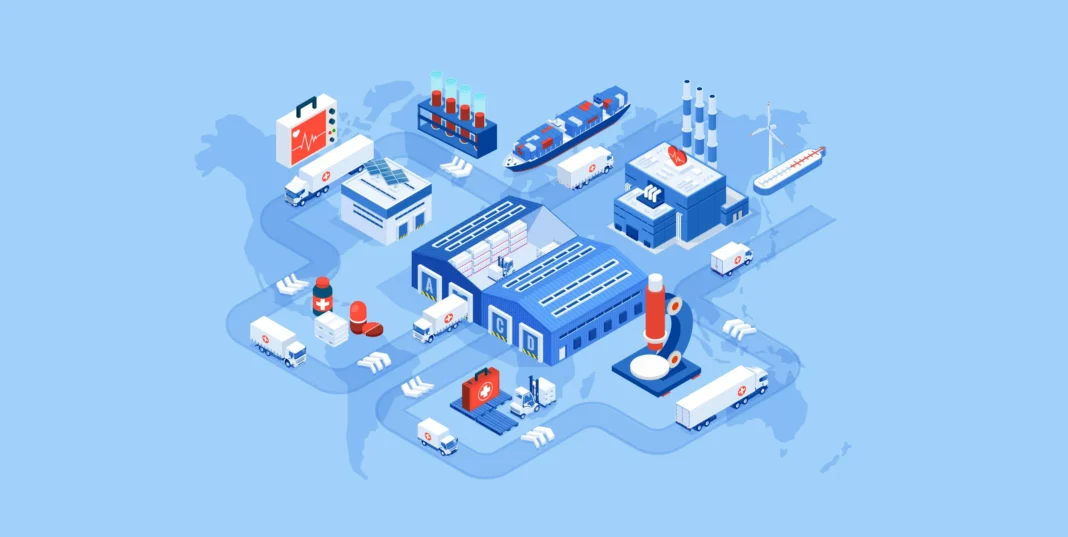Overcoming Challenges in the Pharmaceutical Supply Chain
The pharmaceutical supply chain is incredibly complex. From sourcing ingredients and materials for product manufacturing to successfully bringing the finished drug to market, the process has countless moving parts working behind the scenes. Because of the complexity and high costs, as well as the necessity of adhering to safety guidelines and regulations, many challenges are presented along the way.
Below, we’ll briefly go over the steps within the pharmaceutical supply chain as well as a few common challenges and how modern solutions can help in overcoming them.
First, how does the pharma supply chain work? Broken down into simple terms, it begins with the manufacturing process. This involves acquiring active pharmaceutical ingredients and other materials to be used in production. There are many types of pharmaceutical products including capsules, liquids and aerosols, which all need to be prepared in accordance with the governing authority, such as the Food and Drug Administration (FDA) in the U.S.
Once the product is finished, it is moved along to packaging. A key step in the process, pharmaceutical packaging refers to the design, labeling and materials used, which must all meet strict regulations. Depending on the product, specific storage facilities are needed to maintain the desired quality, especially when handling cold chain-specific medicines and vaccines. This is also a vital consideration for the next step: distribution.
Wholesale distributors and similar operations receive the packaged products from the manufacturer and supply it to various health care markets, such as pharmacies and retail businesses. These distributors — along with the recipients — must also adhere to storage requirements and other safety regulations to ensure the product quality remains unchanged when it reaches the end of the chain, the consumer.
There are many challenges organizations face throughout this process. One example is improper temperature control and handling during transportation. Impacting production materials as well as finished products, this challenge refers to the fact that, as the product changes hands and is transported, it is subjected to certain vulnerabilities. This can impact compliancy and create quality control issues all the way to the end consumer. To rise above this challenge, manufacturers must ensure product quality is protected by utilizing reliable transportation services with refrigerated trucks and equipment.
Closely tied in with this are other pharmaceutical logistics disruptions, such as poor shipment visibility and a lack of effective coordination. Often, overcoming these challenges calls for the implementation of sophisticated tracking and real-time monitoring technology. Such modern advancements work toward greater overall efficiency and minimize the negative impact of supply chain disruptions down the road. In fact, due to the increased investment in leading-edge technology designed to enhance operations, the global pharmaceutical logistics market is expected to reach over 96 billion euros by 2025.
Want to learn more about the pharma supply chain and how it might be improved? Check out the accompanying resource from NetCorp for further information.
Resources
https://www.roambee.com/pharmaceutical-supply-chain-guide/
https://medpak.com/pharmaceutical-supply-chain-management/
Infographic provided by NetCorp, a top company for trailer rental and sales
